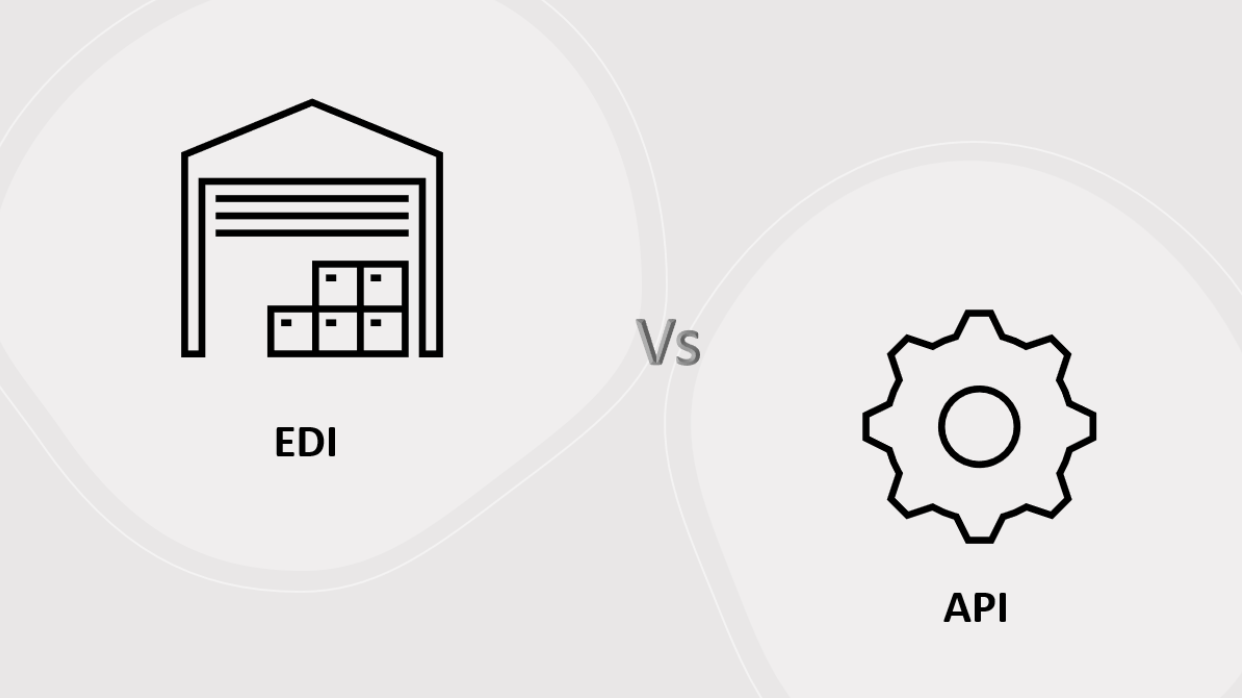
Why do you Need EDI and APIs?
Both APIs and EDI play a prominent role in transferring data from one system to another, so how do you know which one to use? The correct answer to that question isn’t a very clear one, because it depends on your ecosystem of trading partners and applications. However, the best answer is that you’ll likely need to support both mechanisms on a single platform if your business intends to grow. Here, we use some of the top middleware technologies like Boomi, Mulesoft, and Celigo to integrate the data between the source and target systems.
In the diagram below, we can see how Middleware uses EDI and APIs to automate, manage, and transfer data between trading partners and end applications.

On the left-hand side, EDI processes flow bi-directionally based on what is being communicated and on the right-hand side, internal format data is consumed into any 3rd party systems via an API connection.
This is what a vendor means when referring to the “outside-in” approach to integration because your data exchange requirements often are dictated by your ecosystem. By understanding your ecosystem at large, you can determine the best solutions and technologies that will ensure your participation in that ecosystem. Some industries that exchange a lot of financial data, for example, may require more security, governance, and compliance layers than non-standardized API integrations can provide.
Particularly in supply chain-oriented industries, a standard will be set by EDI for exchanging information from system to system in an electronic format without the need for paper and manual processes. EDI has been connecting trading partners and automating Supply Chain Management (SCM) since the 1970s. Data is exchanged in a structured form with EDI, which over time has led to several EDI messaging standards in various industries and regions.
Supply chain processes for the automotive, logistics, CPG, retail, manufacturing, and utility industries will be dominated by EDI.
EDI uses file-based or batch communication with asynchronous calls.
APIs have previous accomplishments as software interfaces to web services and systems. The concept APIs represent today resulted from the Service Oriented Architecture (SOA) movement and the rise of REST and web services over HTTP since the year 2000.
For today’s B2B transactions, APIs and EDI both are reliable in their own aspects depending on the data and the end applications we integrate with. These are appropriate for real-time business processes and are used to transfer data quickly. Web services provide API interactivity and allow the access and change of textual representations of web resources using a uniform and predefined set of stateless operations.
EDI emerged decades ago as a way to streamline business processes, transferring data from system to system with the use of established messaging standards. EDI helps reduce the manual processing of bulk data by allowing the transfer of business documents such as purchase orders, invoices, ASNs, and more, between business partners. EDI data is stored and then transmitted, and therefore has limited use for real-time access and responsiveness.
APIs were first developed in the early 2000s and are often used in Cloud SaaS (Software as a Service) applications. Unlike EDI, APIs enable real-time data exchange. Web service APIs provide easy integration to back-end business systems. Compliance and security are other aspects of APIs that differ from EDI. API integration may not be a suitable solution to adhere to compliance regulations, such as sensitive financial data.
POWER OF MIDDLEWARE IN INTEGRATING DATA USING EDI AND API:
- Define Connections: Set up and manage connections to your Trading Partners or End Applications in less time, with less labor required to complete the Integration.
- Ease of exposing API: With secure API management techniques being used in prominent middleware applications we can easily expose the API for reuse without getting burdened by Complex Legacy style API management.
- Deploy with Flexibility: We can deploy the Integrations with Comprehensive security in a flexible hybrid deployment manner that can run in the cloud or on-premises.
- Automate Integrations: We can build integrations in such a way that we can automate and schedule them to execute in our favorable times.
- Mediation: We can provide an abstraction between the published API and the underlying integration with the EDI systems.
- Authentication: We can deploy APIs and Trading Partner Information with comprehensive security to reduce risks.
EDI Vs API:
As we already know EDI and API are both technologies used for exchanging data between business partners’ computer systems. EDI is used for exchanging structured business data between trading partners’ EDI systems, while APIs are used for integrating and communicating between different software applications for real-time data exchange.
Here are some of the major differences between them:

Stay tuned for Part three of What’s Involved in EDI?
Want to learn more about the EDI and API Methodologies to transfer Business Data? Set up a consultation with us today!









